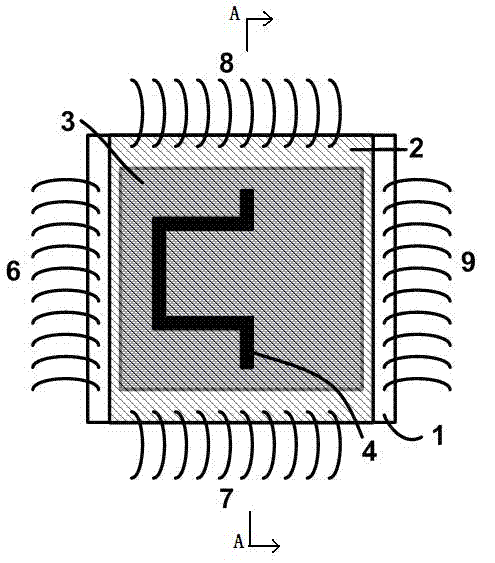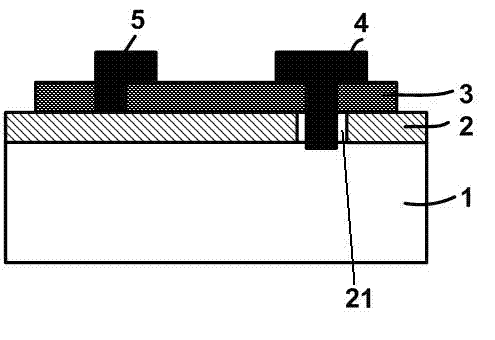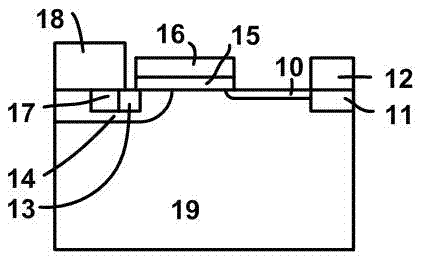Structure for improving performance of passive device of power integrated circuit
A passive device and integrated circuit technology, applied in the field of microelectronics, can solve the problems of lower reliability, higher cost, high doping concentration of the substrate, etc., and achieve the effect of reducing area, reducing loss and increasing thickness
- Summary
- Abstract
- Description
- Claims
- Application Information
AI Technical Summary
Problems solved by technology
Method used
Image
Examples
Embodiment 1
[0026] Such as figure 1 with figure 2 As shown, the power integrated circuit chip includes a substrate 1, a metal plate 2, an insulating layer 3 and a closed pin 6 of the chip, and the package is in the form of a bonding wire. The substrate 1 is used to form power devices and some of the most basic passive devices, which do not require very high quality factors, such as bias resistors and DC decoupling capacitors. It contains several layers of metal, which are used for wiring. The metal plate 2 is to improve isolation between passive devices and active devices. The metal plate 2 is usually grounded, and the source terminal of the power device is also connected to the metal plate 2 to form a current loop. The insulating layer 3 needs to have a certain thickness, usually greater than 60 μm. The thick metal on the metal plate 2 can be used as a passive device to improve the quality factor of the passive device, and the thickness is usually greater than 10 . 4 and 5 show t...
Embodiment 2
[0029] In this embodiment, the present invention is described in conjunction with the structure of the power device LDMOS in the power integrated circuit, and the structure of the N-type LDMOS is taken as an example for illustration, and the same principle is used for the P-type LDMOS and the N-type LDMOS.
[0030] Such as image 3 As shown, the power device LDMOS includes a gate 16 , a source 13 and a drain 11 . The source terminal 13 of this power integrated circuit is not grounded through the substrate 19, but is grounded through a large metal plate in the power integrated circuit. Therefore, compared with the traditional power integrated circuit, the resistivity of the substrate can be increased, which can reduce the loss. . The source 13 and the drain 11 are heavily doped N-type sources and drains, and the doping concentration is usually 10 19 / cm 3 As above, the metal interconnections 18 and 12 are respectively connected to the source 13 and the drain 11 . The source...
Embodiment 3
[0032] In this embodiment, on the basis of Embodiment 1, further improvements are made. Such as Figure 4 As shown, the substrate 1 is pierced by the TSV (Through-Silicon-Via) method, and a through channel 20 is formed on the substrate 1, and the metal plate 2 is connected to the backside of the substrate through the channel 20. The heat sink dissipates heat. In this way, the substrate 1 can be attached to the conductive heat sink, and the grounding is naturally realized without using Bondwire or flip-chip welding to lead out the source. These two methods can also be used at the same time, which can further reduce the parasitic inductance and resistance, and improve the efficiency of the device. All the other are identical with embodiment 1.
PUM
 Login to View More
Login to View More Abstract
Description
Claims
Application Information
 Login to View More
Login to View More - R&D
- Intellectual Property
- Life Sciences
- Materials
- Tech Scout
- Unparalleled Data Quality
- Higher Quality Content
- 60% Fewer Hallucinations
Browse by: Latest US Patents, China's latest patents, Technical Efficacy Thesaurus, Application Domain, Technology Topic, Popular Technical Reports.
© 2025 PatSnap. All rights reserved.Legal|Privacy policy|Modern Slavery Act Transparency Statement|Sitemap|About US| Contact US: help@patsnap.com



